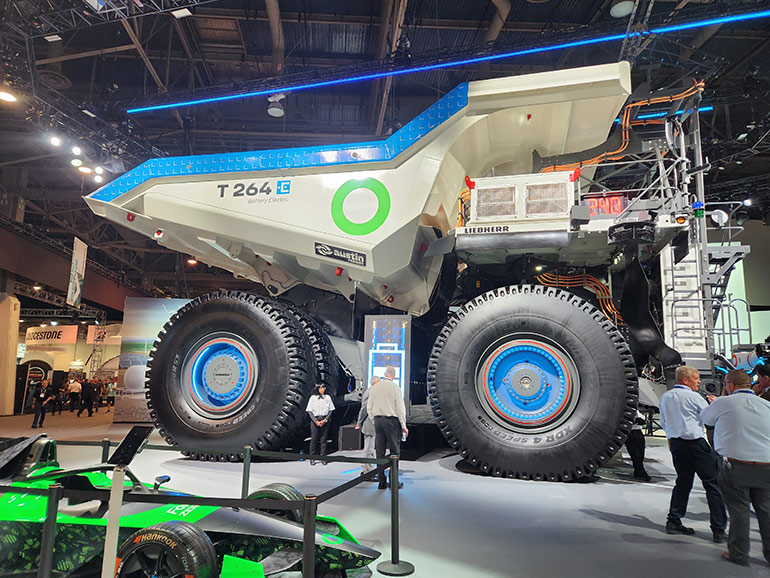Electrification is totally in vogue these days. You can’t visit any type of off-highway event and not be overtaken by this trend. The need to reduce emissions is 100% necessary and a noble deed. But are battery-powered machines the only realistic solution?
In some cases, the answer is a resounding YES! Compact machinery such as forklifts or airport tugs and restackers can swap out internal combustion engines with batteries easily. They also can hook up to charging stations or right into the grid on-site, especially if they run in cycles and have planned downtime for charging.

But as you look at bigger and bigger machines, the question of how effective they will be becomes more prevalent. In a presentation at the Danfoss Distributor Meeting in September, Chad Larish, Principal Engineer, Controls Division at Danfoss Power Solutions, highlighted a stat which I think more people need to be aware of. Despite published operating times on battery-powered machinery of 6-8 hours, they’re really only capable of lasting 3-4 hours. (Read more from Larish here now). That’s a huge difference.
In a recent Fluid Power World webinar on the benefits and best fits for hybrid systems, Barun Acharya, System Applications Engineering Manager at Parker Hannifin, echoed these words. “One way to determine what is the best fit for fully electric equipment or whether electrification applies or not is to look at the power consumption on the application versus the duty cycle,” Acharya said. “If your duty cycle is low and your power required is low, electrification makes total sense. Like a golf cart or small forklifts … electrification makes total sense there. And it has already happened there. On the other side, if you look at applications where you have high power and high duty cycle, like a big excavator … electrification really doesn’t make sense.”
Acharya did note an exception, however, saying that mining operations, which are usually maintained for decades and often operated 24/7, will often have the electrical transmission lines installed, so it makes sense to have those mining machines electrified. (You can view Acharya’s webinar at fluidpowerworld.com.)
Despite his words of caution, there are plenty of large excavators and other similar-sized machinery being electrified. And I wonder, even with access to charging stations, will such massive machinery have the runtimes needed? At MinExpo last month, Liebherr showcased three electric machines. It was impressive to see these massive machines and know they were using battery solutions. Liebherr announced a partnership with Fortescue Zero for its T 264 autonomous truck, where Fortescue’s stationary fast-charging solution uses robotic connections that can provide up to 6 MW of power in just 30 minutes.
But a potential drawback in all this excitement is the companies have not revealed the truck’s runtime. If it’s like what Larish noted of 3-4 hours runtime, you’re still losing approximately 3 hours of that 24-hour machine productivity to charging. In the webinar, Acharya also highlighted the prohibitive costs of electric machines, where battery costs are high. He also pointed out that battery-powered machines are much heavier, which in turn results in a 25-30% lower payload capability.
In Acharya’s discussion, he highlighted the best use cases of hybrid machines. It would be helpful if government incentives and rebates will be made available for such hybrid machines, especially as such incentives are pushed heavily into the electric, battery-powered designs.
Finding a sweet spot is necessary. If we really want to reduce emissions and ensure productive fleets, we need to continue to develop and study the opportunities for the four types of electrified machines and hybrid designs in the off-highway space and fit them to the right applications. Electrifying for the sake of electrifying seems like it could be a waste of R&D money and time.
Filed Under: EV Engineering, Featured, Mobile Hydraulic Tips, Trending